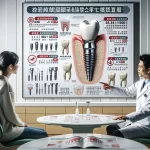Dental bonding is a popular cosmetic dental procedure that can significantly enhance your smile by addressing minor dental issues such as chipped, cracked, or discolored teeth. As we step into 2024, understanding the costs associated with dental bonding in the USA is crucial for anyone considering this procedure. This article will provide a detailed breakdown of the costs, factors influencing the price, and additional considerations to help you make an informed decision.
What is Dental Bonding?
Dental bonding involves applying a tooth-colored composite resin to your teeth to repair damage and improve appearance. This minimally invasive procedure is typically completed in a single visit and often does not require anesthesia. The resin is shaped and polished to match the surrounding teeth, providing a natural and seamless look.
Benefits of Dental Bonding
- Quick and Painless: The procedure is usually completed in one visit and is painless, making it an ideal choice for those looking to improve their smile without extensive dental work.
- Natural Appearance: The composite resin used in bonding matches the color of your natural teeth, ensuring a natural look.
- Cost-Effective: Compared to other cosmetic dental procedures, dental bonding is relatively inexpensive.
- Improves Dental Health: Besides enhancing appearance, bonding can also protect teeth from further damage.
How Much Does Dental Bonding Cost?
The cost of dental bonding in the USA varies widely based on several factors. On average, you can expect to pay between $300 and $600 per tooth. However, the price can range from as low as $100 to as high as $1,000 per tooth, depending on various factors.
Factors Influencing the Cost
- Number of Teeth: The more teeth that need bonding, the higher the overall cost.
- Complexity of the Procedure: More complex cases requiring extensive work will cost more.
- Dentist’s Experience and Credentials: Dentists with specialized training and extensive experience in cosmetic procedures may charge more.
- Location: Dental practices in areas with higher living costs may charge more for their services.
- Additional Procedures: Pre-bonding procedures like dental exams, cleanings, and teeth whitening can add to the overall cost.
Additional Costs
Before undergoing dental bonding, you may need additional procedures that can increase the total cost:
| Procedure | Average Cost | Cost Range |
|---|---|---|
| Dental Exam | $100 | $50 to $200 |
| Dental Cleaning | $100 | $50 to $500 |
| Professional Teeth Whitening | $300 | $125 to $625 |
Does Dental Insurance Cover Dental Bonding?
Dental insurance coverage for bonding varies. If the procedure is deemed medically necessary—such as repairing a chipped or cracked tooth—insurance may cover part or all of the cost. However, if the bonding is for purely cosmetic reasons, insurance is less likely to cover it. Always check with your insurance provider to understand your coverage.
The Dental Bonding Process
Understanding the dental bonding process can help you prepare for the procedure and know what to expect:
- Preparation: The dentist will select a composite resin color that matches your natural teeth.
- Tooth Preparation: The tooth’s surface is roughened, and a conditioning liquid is applied to help the resin adhere.
- Application: The resin is applied, molded, and smoothed to the desired shape.
- Curing: An ultraviolet light or laser is used to harden the resin.
- Finishing Touches: The dentist will trim, shape, and polish the bonded tooth to match the sheen of the rest of the tooth surface.
How Long Does Dental Bonding Last?
With proper care, dental bonding can last between 3 to 10 years. The longevity of the bonding depends on factors such as oral hygiene, eating habits, and the extent of the bonding work.
Tips for Maintaining Dental Bonding
To ensure your dental bonding lasts as long as possible:
- Maintain good oral hygiene by brushing twice daily and flossing regularly.
- Avoid hard foods that could damage the bonding material.
- Limit consumption of staining foods and drinks like coffee, tea, red wine, and tobacco.
- Schedule regular dental check-ups for professional cleaning and monitoring.
Comparing Dental Bonding with Other Cosmetic Procedures
Dental bonding is often compared with other cosmetic dental procedures like veneers and crowns. Here’s a quick comparison:
| Procedure | Cost per Tooth | Durability | Invasiveness |
|---|---|---|---|
| Dental Bonding | $100 – $1,000 | 3 – 10 years | Minimally invasive |
| Porcelain Veneers | $925 – $2,500 | 10 – 15 years | Moderately invasive |
| Dental Crowns | $500 – $3,000 | 10 – 15 years | Highly invasive |
Why Choose Dental Bonding?
- Affordability: Dental bonding is one of the most cost-effective cosmetic dental procedures available.
- Quick Results: The procedure can be completed in a single visit without lengthy treatment times.
- Reversibility: Unlike veneers, bonding does not require enamel removal, making it reversible if needed.
Conclusion
Dental bonding presents an excellent option for those looking to improve their smile without breaking the bank. In 2024, costs range from $100 to $1,000 per tooth, influenced by various factors. By understanding these costs along with the benefits and processes involved, you can make an informed decision about whether dental bonding is right for you.
For more information on dental bonding and other dental procedures that promote a healthy smile, visit American Dental Association for expert tips and advice tailored to your needs.
What is the average cost of dental bonding?
The cost of dental bonding can vary widely depending on the complexity of the procedure and the specific dental practice. However, on average, you can expect to pay between $100 to $400 per tooth.
Does dental insurance typically cover the cost of dental bonding?
Dental insurance may cover some or all of the cost of dental bonding, especially if the procedure is done for structural reasons or to fill a cavity. However, if the bonding is done for purely cosmetic reasons, insurance may not cover the cost.
How does the cost of dental bonding compare to other cosmetic dental procedures?
Dental bonding is generally less expensive than other cosmetic dental procedures such as veneers or crowns. However, it’s important to note that bonding may not last as long and may not be suitable for all types of cosmetic corrections.







